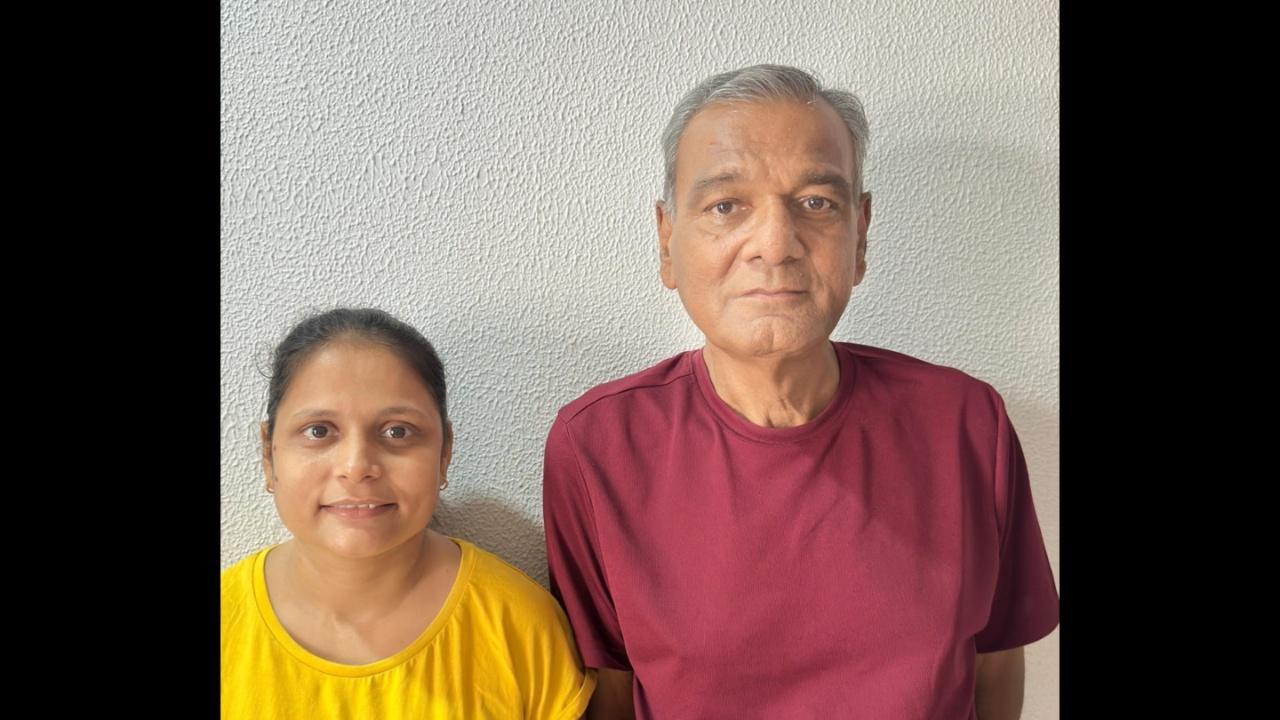In a world where instances of children deserting their parents have become common, a 33-year-old woman from Surat went ahead to donate a portion of her liver to her father-in-law who was battling chronic liver disease

Mital Viratia and Sanjay Viratia
Before the Covid-19 pandemic, Sanjay Viratia, a 58-year-old Surat resident, underwent a health check-up that revealed significant swelling in his liver. Following this diagnosis, he began experiencing blood in his vomit and developed stomach ulcers. Over the next six months, his health declined further, marked by frequent drowsiness and symptoms that severely disrupted his daily life.
ADVERTISEMENT
Tired, he arrived in Mumbai to seek consultation from doctors at Gleneagles Hospitals. Post consultation with Dr Gaurav Chaubal, director of liver, pancreas, and intestine transplant program, and Dr Uday Sanglodkar, senior consultant hepatologist and clinical lead liver and transplant ICU, he was advised to undergo a robotic liver transplant.
Sanglodkar informs, “Upon arrival, a thorough assessment, including a liver function test and MRI scan of the liver, confirmed that Sanjay had been dealing with chronic liver disease for the past three years. He had recently been admitted multiple times in Surat due to episodes of drowsiness, liver failure and kidney damage.”
The decision was made to proceed with an early liver transplant as delaying the procedure could have resulted in severe consequences like liver failure and death. Despite all family members willing to donate their part of liver none were a suitable match except for his daughter-in-law. She selflessly volunteered to donate a portion of her liver to save her father-in-law's life. A living donor liver transplant was then performed where the donor's liver completely regenerates within three months after the surgery.
In the operation theatre, a robotic surgery was performed on the patient which reduced recovery time and minimised surgical trauma. Chaubal, highlights, “A liver transplant is a complex procedure wherein a damaged liver is replaced with a healthy one from either a deceased donor or a living donor who donates a portion of their liver.”
He continues, “Robotic liver transplant offers safety and accuracy by reducing the risk of complications with successful outcomes for patients. This revolutionary technique reduces post-operative pain and discomfort, enabling patients to resume their daily activities with ease when compared to the traditional surgeries.”
Post his recovery, Sanjay reflects, “My daughter-in-law has shown care and love by stepping up to save my life. I feel blessed to have such a responsible and caring family memeber who stands strong during challenging times like this medical crisis.”
His daughter-in-law, Mital Viratia, added, “The advanced technology of robotics ensured that I did not have a large abdominal scar and recovery time was also quick. With our blood types matching, I remained firm in my decision to save the life of my father-in-law.”
Also read: Five essential tips to stay disease-free this monsoon
 Subscribe today by clicking the link and stay updated with the latest news!" Click here!
Subscribe today by clicking the link and stay updated with the latest news!" Click here!







